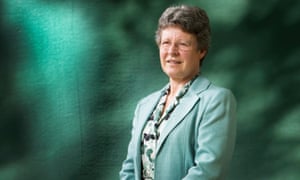Hooray for Jocelyn Bell Burnell – the world needs more scientists like her
As well as being a brilliant physicist, the winner of the Breakthrough prize is a generous, inspirational role model

As a research student in the 1960s, Bell Burnell noticed a mysterious pulsing signal in data from a radio telescope. In time, and after much painstaking observation on her part, this was revealed to be a new type of star: a pulsar. She was the first scientist ever to have detected one – but in the end the Nobel prize recognising the discovery went to her male PhD supervisor.
Bell Burnell is one of those rare scientists who go out of their way to help an inquiring mind. As a science journalist, I found her always prepared to answer a question or two on the latest discovery in astrophysics, or on the seemingly endless struggle to encourage more girls and women to enter the field and stay. In this latest move, she gives others the opportunity to make their mark in the way that she did. And as she puts it: “Increasing the diversity of physics could lead to all sorts of good things”.
My own journey out of physics and into journalism was pretty rapid. In the early 1980s, while at Imperial College, I was one of eight students lucky enough to spend the summer of our second year at the Royal Observatory at Herstmonceux, in Sussex. My project on optics and telescopes taught me a lot about the laborious nature of much of science, and that results don’t necessarily come fast. But something important was missing. I believe now that if I had had a female mentor, my flight from the field might have been less swift.
But in Bell Burnell I found a role model whom I could at least aspire to. At that point, I suspect I would have been overawed if I had actually met her, but when I did in later life she was typically generous with her time. And the next generation has been struck by her generous spirit too. My daughter, when fascinated by science as a teenager, had no qualms about rushing up to Bell Burnell to ask a question after a public lecture. She had already helped to break down barriers for women so they felt confident in approaching her, and more confident too in grasping the subject.
I hope she enjoys the ceremony in California this autumn to mark this latest award for her landmark discovery of pulsars and her lifetime of inspiring leadership in the scientific community. It’s about time we recognised that the best scientists are not necessarily those handed a Nobel prize, but those who give something tangible back to their subjects. Bell Burnell has been a role model for countless women physicists, and, I suspect, a fair few men.
• Susan Watts is head of communications at Rothamsted Research and former science editor of BBC Newsnight
Comments
Post a Comment